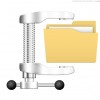Hi there! 😊 If you’ve been keeping tabs on the digital marketplace, you’re probably aware that ecommerce has been on a stratospheric rise. But what could possibly propel it further? The answer lies within the vibrant world of no-code ecommerce—a game-changer that’s here to revolutionize the way we think about setting up shop online!
Why No-Code Ecommerce Is Simplifying Online Retail Success 🛒
In my years of developing software solutions, one trend has become increasingly clear: simplicity wins. And it’s no surprise that no-code ecommerce is taking the lead in simplifying the path to online retail success. Here’s why:
User-Friendly Platforms: No-code solutions like Shopify have demolished the complex barriers that once stood between idea and execution. Anyone with a vision can now create and launch an online store with intuitive drag-and-drop interfaces.
Cost-Efficiency: Developing an ecommerce platform from scratch can burn through capital. No-code tools offer a budget-friendly alternative, with many providing robust functionality at a fraction of the cost.
No-Code Ecommerce: Powering Agility and Speed in Retail 🏃💨
The online marketplace waits for no one. Retailers must pivot quickly to consumer demands and market changes. No-code ecommerce excels in agility and speed, enabling businesses to:
Adapt Faster: Without the need for extensive coding, retailers can rapidly modify their online stores. Whether it’s tweaking the UX or adding new features, no-code platforms facilitate on-the-fly adjustments.
Go to Market Quickly: The beauty of no-code platforms, like Bubble, is that they can reduce development time from months to weeks or even days. This means businesses can capitalize on trends almost instantly.
The Democratization of Ecommerce with No-Code Platforms 🌐
Entrepreneurship should be accessible to everyone. This ethos is at the heart of no-code ecommerce:
Leveling the Playing Field: Previously, entering the online retail space may have required a significant investment in web development. No-code platforms have shattered this barrier, inviting a more diverse circle of entrepreneurs to the table.
Empowering Creativity: No longer bogged down by the technicalities, creatives can focus on what they do best—designing and curating products. Innovation thrives when technical constraints are minimized.
Don’t Miss Out: Subscribe to Our Newsletter at Gibni.com 📧
Are you captivated by the boundless possibilities of no-code ecommerce? Well, here’s your chance to stay ahead of the curve! 🌟
Join our community at Gibni.com by subscribing to our newsletter. We’re all about sharing valuable insights, tips, and trends that could amplify your own ecommerce journey. Can’t wait to see you there!
As we wrap up this exploration of why no-code ecommerce is the future of online retail, I leave you with a parting thought: the power to transform your retail aspirations into reality has never been more accessible. 💡 Embrace the no-code revolution and watch your business soar to new heights. 🚀
Frequently Asked Questions About No-Code Ecommerce
What is No-Code Ecommerce?
No-code ecommerce refers to online retail platforms that allow users to create and manage their stores without writing a single line of code. These platforms offer intuitive user interfaces with drag-and-drop features to customize store design, add products, and handle transactions.
How Can No-Code Ecommerce Platforms Help Small Businesses?
By lowering the barriers to entry, no-code ecommerce platforms enable small businesses to launch online stores quickly and affordably. This empowers entrepreneurs with limited technical skills or budgets to compete in the online retail space effectively.
Is No-Code Ecommerce Secure?
Yes, reputable no-code ecommerce platforms often include robust security measures such as SSL encryption, secure payment processing, and compliance with industry standards like PCI DSS. It’s essential to choose platforms with a strong commitment to security.
Can I Integrate Third-Party Applications with No-Code Ecommerce Platforms?
Absolutely! Many no-code ecommerce platforms offer integration with a wide array of third-party applications, allowing for extended functionality such as email marketing, analytics, customer relationship management, and more.
Is No-Code Ecommerce Scalable?
Many no-code ecommerce platforms are designed with scalability in mind. They can accommodate growing product ranges, increased traffic, and expanded market reach. As your business grows, these platforms can adapt to your evolving needs.
Keywords and related intents:
Here are 10 search intents based on the given content, along with the associated keywords for each:
1. **Search Intent:** Users looking to understand the basics of no-code ecommerce.
– **Keywords:** no-code ecommerce definition, what is no-code ecommerce, basics of no-code ecommerce
2. **Search Intent:** Individuals seeking information on how no-code ecommerce is changing online retail.
– **Keywords:** impact of no-code ecommerce on retail, no-code ecommerce revolution, no-code ecommerce online retail changes
3. **Search Intent:** Entrepreneurs curious about the advantages of using no-code platforms for ecommerce.
– **Keywords:** benefits of no-code ecommerce platforms, advantages of no-code ecommerce, why choose no-code ecommerce
4. **Search Intent:** Business owners interested in finding user-friendly platforms for setting up their online store.
– **Keywords:** user-friendly ecommerce platforms, no-code tools for online stores, Shopify drag-and-drop interface
5. **Search Intent:** Retailers searching for cost-effective solutions to enter the ecommerce space.
– **Keywords:** cost-efficient ecommerce platforms, budget-friendly no-code stores, affordable ecommerce solutions
6. **Search Intent:** Ecommerce businesses inquiring about the speed and agility of no-code platforms.
– **Keywords:** fast ecommerce launch, agile ecommerce platforms, no-code solutions for quick market entry
7. **Search Intent:** Aspiring entrepreneurs wanting to know how no-code ecommerce levels the playing field.
– **Keywords:** democratization of ecommerce, accessible online retail platforms, no-code for diverse entrepreneurs
8. **Search Intent:** Creatives looking for platforms that allow them to focus on product design without technical hassles.
– **Keywords:** ecommerce for creatives, simplify online store setup, no-code platforms for innovation
9. **Search Intent:** Subscribers looking for resources and newsletters regarding no-code ecommerce trends.
– **Keywords:** ecommerce news and tips, staying ahead in ecommerce, subscribe to ecommerce newsletter
10. **Search Intent:** Users seeking information on security, integration, and scalability of no-code ecommerce platforms.
– **Keywords:** security of no-code platforms, integrating apps with no-code ecommerce, scalability of ecommerce platforms
Each search intent taps into a different potential need or question a user may have about no-code ecommerce and its benefits, capabilities, and how it facilitates easier entry and success in online retail.
#no-code ecommerce
#NoCode #Ecommerce #Future #Online #Retail


 Faster and optimized eCommerce websites do sell +40% more than slower ones, just because they are faster. You “will” agree once you see the money come ;) trust me.
Faster and optimized eCommerce websites do sell +40% more than slower ones, just because they are faster. You “will” agree once you see the money come ;) trust me.
 If you don’t know it already, CS-Cart runs Smarty for its template engine. Smarty is basically great from an ease of use point of view, but unfortunately, Smarty v2 is not optimized for speed. Well, Smarty did great on its Smarty v3 on speed optimization, and included multiple cache handlers like eAccelerator, APC and others.
If you don’t know it already, CS-Cart runs Smarty for its template engine. Smarty is basically great from an ease of use point of view, but unfortunately, Smarty v2 is not optimized for speed. Well, Smarty did great on its Smarty v3 on speed optimization, and included multiple cache handlers like eAccelerator, APC and others. I have to mention that APC caching improves A LOT your site performance, but, Smarty v2 does not contain an APC cache handler, so I made an APC cache handler for Smarty v2, and thus for CS-Cart 3, which makes your content load directly from “RAM” instead of Hard Drive. This means “very fast”.
I have to mention that APC caching improves A LOT your site performance, but, Smarty v2 does not contain an APC cache handler, so I made an APC cache handler for Smarty v2, and thus for CS-Cart 3, which makes your content load directly from “RAM” instead of Hard Drive. This means “very fast”.



